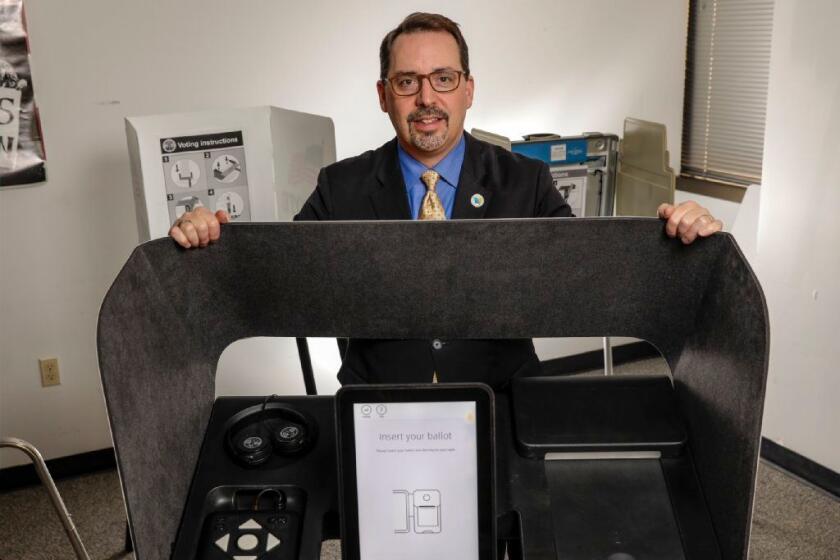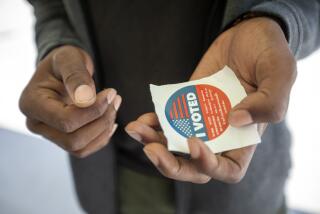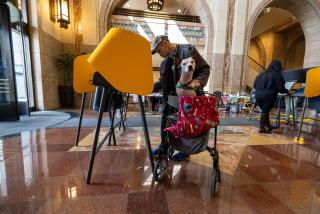Ready for the voting overhaul in L.A. County? Here’s what you need to know
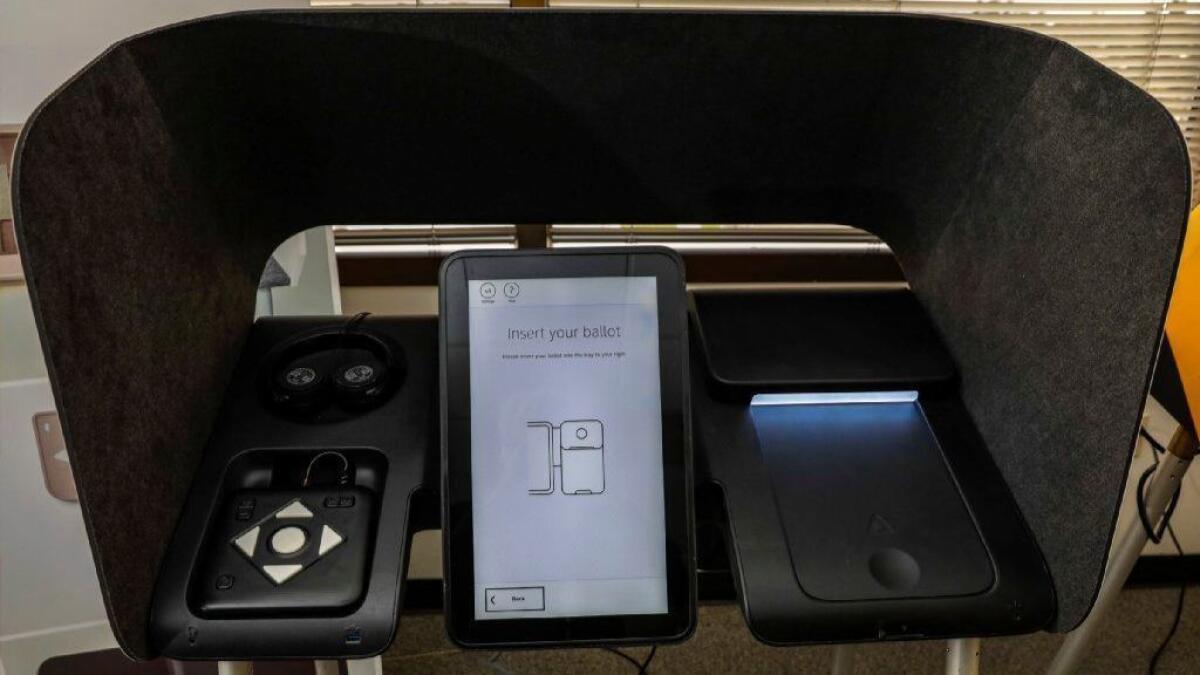
- Share via
By next spring’s primary election, the voting experience for Los Angeles County residents will be substantially different — the culmination of a decade-long effort by elections officials to modernize the voting system for the county’s large and diverse electorate.
Much of the current process — ballots, polling locations, vote tallying and more — will change under a new county program called Vote Solutions for All People. Here’s what you need to know to be ready before the earlier-than-usual presidential primary in March.
Vote centers
Many traditional, assigned polling places — more than 4,000 in the county — will be closed. Instead, the county will open as many as 1,000 new “vote centers.”
In the past, precinct polling places were necessary to ensure that voters received pre-printed ballots with relevant contests — the correct City Council race, for example. The new system will allow voters to cast their ballots at any vote center, which will be open various hours to accept ballots in person for 10 days.
On election day, voters also can still cast their ballots from 7 a.m. to 8 p.m.
Starting in spring, some 5.2 million Los Angeles County residents will change the way they vote. If the plan goes awry — either in the March primary or in the November election, in which President Trump is likely to be on the ballot — blame will likely fall on Dean Logan, Los Angeles County’s registrar-recorder and clerk.
Ballot-marking devices
The county and its contractors spent years evaluating the way people vote to create the design for 31,000 new devices to cast ballots.
At about $3,800 a unit, the machines use technology — with a ballot screen that resembles a large tablet computer in portrait mode — to help voters mark their selections. They also have features for additional accessibility and languages, such as audio and tactile keypads.
For security, the devices are not connected to the internet or any networks. They also spit out a paper ballot that voters physically cast for additional protection.
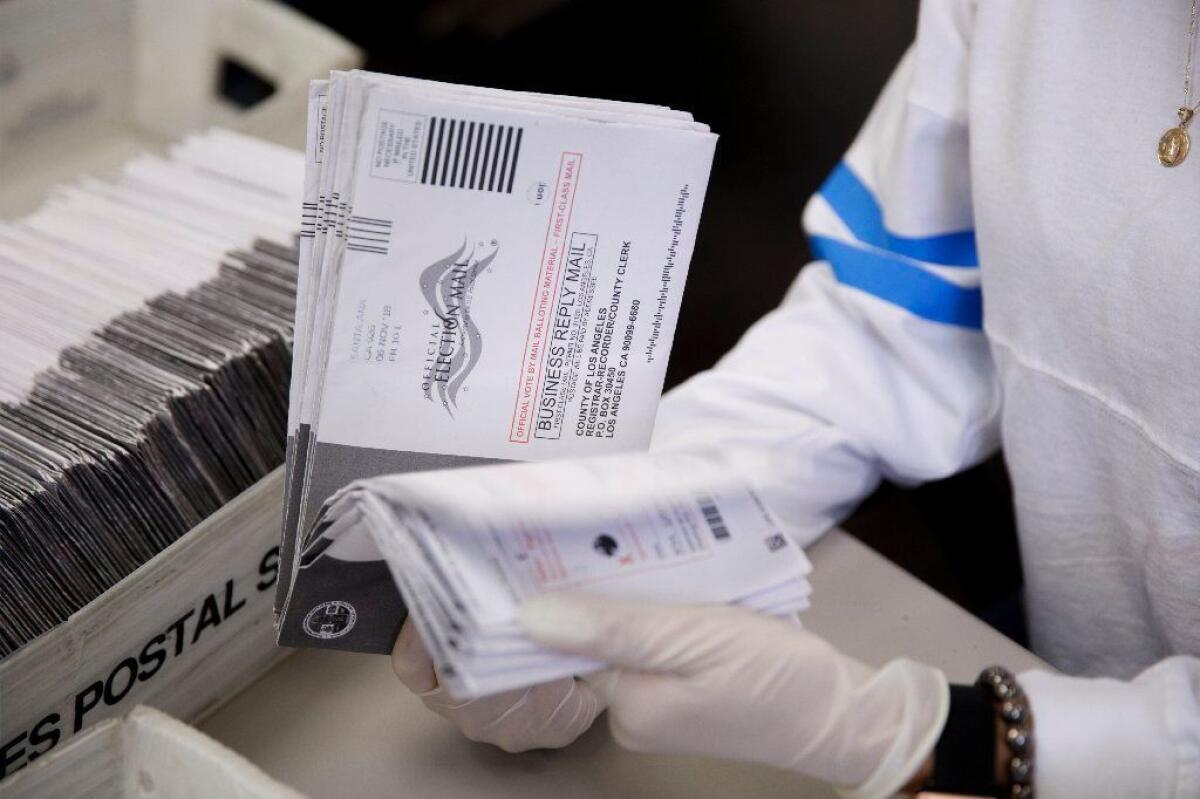
Vote by mail
The absentee voting experience has been redesigned to make voting easier, with newly designed envelopes and large type, replacing ballots that resembled standardized tests.
Voters can mail these ballots or drop them off at vote centers. Voters also can change their minds and vote in person, without triggering a provisional ballot.
Interactive sample ballot
Voters will have the option of pre-marking a sample ballot using a web-based application and bringing that to a vote center on their smartphone or other device. They can then transfer their selections to an official ballot-marking device and review those votes, speeding up the process.
Electronic poll books, and tallying
The vote centers are possible in part because of a new computer system that can verify any voter’s eligibility and same-day registration. Voters will be able to receive a ballot specific to their registration location regardless of where they cast a vote in L.A. County.
Once a ballot is cast, a new system at the county registrar-recorder’s office will use image-processing technology to capture and store ballots digitally and count both mail and device ballots. Election officials say it’s a more open, transparent and accurate method for tracking votes. They also stress that the ballot-marking devices and tallying system aren’t connected — and that paper ballots will serve as the official records for audits and recounts.
Learn more
County officials have created a website with more information about the changes — in multiple languages. You can also learn more about how vote centers will soon be implemented in Orange and Santa Clara counties.
More to Read
Sign up for Essential California
The most important California stories and recommendations in your inbox every morning.
You may occasionally receive promotional content from the Los Angeles Times.
